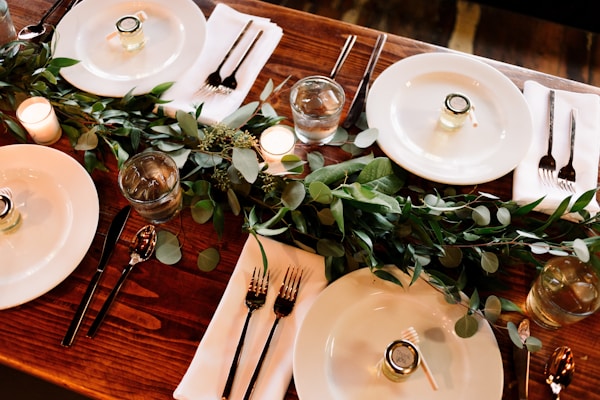Mastering Wedding Dress Production with Custom Fabric Choices: Your Ultimate Guide
How Do You Manage the Production of Wedding dresses with Custom Fabric Choices?
The wedding dress is often considered the centerpiece of a wedding, representing the bride's personal style and the unique vision of her special day. With the rise in popularity of custom fabric choices, managing the production of Wedding dresses has become a nuanced task requiring skillful coordination between designers, fabric suppliers, and seamstresses. In this article, we will explore effective strategies for managing this complex process, ensuring that each bridal gown is not only beautiful but also meets the expectations of brides everywhere.
Understanding Custom Fabric Choices
Custom fabric choices play a crucial role in the overall design and feel of a wedding dress. Brides today seek out unique textiles that reflect their personalities, cultural backgrounds, and wedding themes. With options ranging from lace and silk to sustainable organic fabrics, the possibilities are endless. However, with great choice comes the challenge of managing production timelines, quality control, and budgeting. Here’s how to navigate these complexities.
1. Establish Clear Communication Channels
One of the most critical aspects of managing wedding dress production is communication among all parties involved. From the initial consultation with the bride to the final fitting, clear communication ensures that everyone is on the same page. Consider these points:
- Initial Consultation: Discuss the bride’s vision, fabric preferences, and budget.
- Regular Updates: Keep the bride informed about the progress, especially during fabric selection and fittings.
- Feedback Loops: Encourage feedback from the bride at various stages to ensure satisfaction.
2. Create a Detailed Production Schedule
A production schedule is essential for managing timelines, especially when dealing with custom fabrics. This schedule should outline:
- The timeline for fabric sourcing and selection.
- Waste management and adjustments needed during production.
- Fitting appointments and last-minute alterations before the wedding day.
By creating a detailed production schedule, you can anticipate potential delays and avoid last-minute stress.
| Key Stages in Wedding Dress Production | Timeframe | Responsibilities |
| Initial Consultation | 1-2 Weeks | Designer and Bride |
| Fabric Sourcing | 2-4 Weeks | Designer |
| Designing the Dress | 2-3 Weeks | Designer |
| First Fitting | 1 Week | Seamstress |
| Final Adjustments | 1 Week | Seamstress |
3. Sourcing Quality Fabrics
Quality fabrics can make all the difference in the final garment. Here are some tips for sourcing high-quality materials:
- Research Suppliers: Look for reputable fabric suppliers who specialize in bridal fabrics.
- Request Samples: Always request samples before making bulk purchases to assess the fabric's quality.
- Consider Sustainability: Many brides are looking for eco-friendly fabric options, which can set your designs apart.

4. Managing Budget Constraints
With custom fabric choices, budgeting becomes a crucial element. High-quality fabrics can significantly increase costs, so consider these budgeting strategies:
- Transparent Pricing: Be upfront about costs with the bride during the consultation.
- Prioritize Needs vs. Wants: Help the bride prioritize what she must have versus what would be nice to include.
- Flexible Payment Plans: Offer payment options that can ease financial pressure.
Challenges in Custom Fabric Production
While creating Wedding dresses with custom fabrics can be rewarding, it also presents several challenges:
1. Fabric Availability
Some custom fabrics may not be readily available, leading to potential delays. Always have alternative fabric options ready and communicate these with the bride.
2. Unforeseen Alterations
During the fitting stages, unforeseen alterations can arise due to the unique properties of certain fabrics. Build time into your schedule for these adjustments.
3. Maintaining Quality Control
Quality control is paramount. Regularly check fabric and stitching during production to ensure the final product meets high standards.
Final Fitting and Delivery
The final fitting should be a celebratory moment, allowing the bride to see her dream gown come to life. Here are tips for ensuring a smooth process:
- Schedule Ample Time: Reserve sufficient time for the final fitting to allow for any last-minute adjustments.
- Provide Care Instructions: Educate brides on how to care for their custom gown post-purchase.
- Plan for Delivery: Arrange for the dress to be safely delivered or provide options for in-person pick-up.
Conclusion: The Art of Custom Wedding Dress Production
Managing the production of Wedding dresses with custom fabric choices requires a blend of creativity, organization, and communication. By establishing strong communication channels, creating detailed production schedules, sourcing quality materials, and maintaining budgetary control, designers and seamstresses can navigate the complexities of custom fabric choices with ease. Remember, the ultimate goal is to create a dress that not only meets but exceeds the bride's expectations, helping her shine on her special day.
Key Takeaways:
- Effective communication is vital throughout the production process.
- A detailed timeline can help in managing expectations and reducing stress.
- Quality fabrics and careful budgeting are essential for successful custom dress production.
By following these strategies and tips, you can ensure a successful gown production process, setting the stage for unforgettable wedding celebrations.